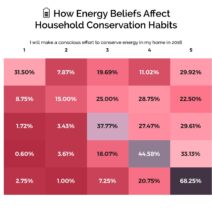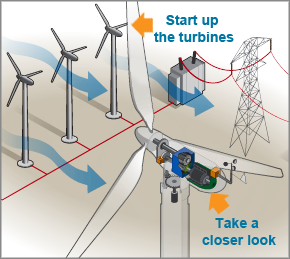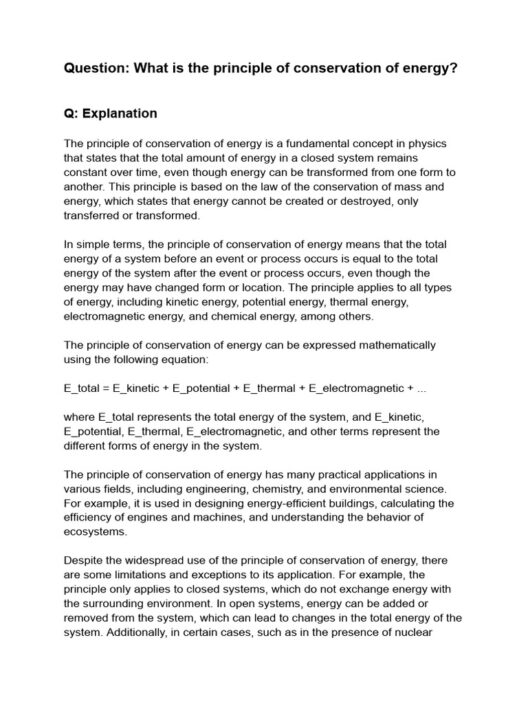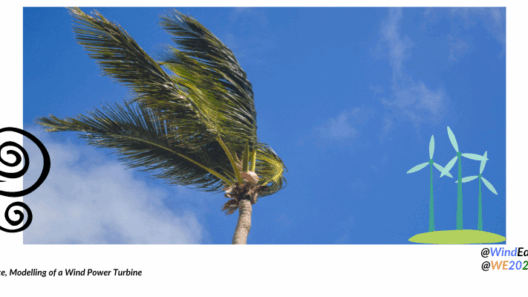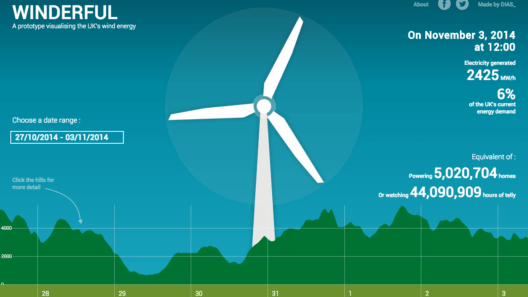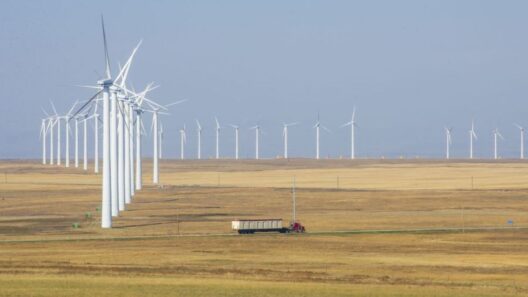In the ever-evolving landscape of energy sources, one shines brightly—wind energy. Harnessing the ethereal forces of nature, wind turbines transform the invisible into the palpable, converting the mechanical energy of wind into electricity. Yet, what drives the wind itself? The ultimate energy source for most wind can be traced back to the sun and the intricate interplay between atmospheric elements. In this exploration, we will pivot around the celestial forces and terrestrial phenomena that give rise to wind power, revealing why this renewable resource continues to capture our imagination and aspirations for a sustainable future.
The Sun: The Celestial Dynamo
At the heart of wind energy lies the sun, acting as the ultimate dynamo of our climate system. As sunlight bathes the Earth, it warms the surface unevenly due to variations in geography, water bodies, and vegetation. This disparity in temperature creates a gradient, which becomes the breeding ground for wind. When air warms, it rises and creates areas of low pressure; conversely, cooler air moves in to fill the void, generating wind currents. These movements—akin to the gentle breaths of the Earth—are the primary drivers of wind energy. The sun’s influence extends far beyond simple warmth; its rays drive atmospheric circulation, a grand choreography that dictates weather patterns and determines where and how power from the wind can be harnessed.
Atmospheric Dynamics: What Makes the Wind Blow
While the sun is the master puppeteer, atmospheric dynamics add complexity to the performance. Factors such as the Earth’s curvature, the Coriolis effect, and the presence of mountains significantly influence wind patterns. The Coriolis effect, a result of the Earth’s rotation, causes winds in the Northern Hemisphere to curve to the right, while those in the Southern Hemisphere bend to the left. This twist not only affects global wind patterns but also contributes to the genesis of gales and breezes that are pivotal for wind power generation.
Geographical features also play a monumental role. Mountain ranges can funnel winds into narrow valleys, intensifying their speed, while bodies of water can moderate temperature variations, creating localized breezes. These features exemplify how the Earth’s topography creates a kaleidoscope of wind dynamics, offering both challenges and opportunities for harnessing wind energy.
Climate Whispers: How Climate Change Impacts Wind Power
As the Earth undergoes climatic changes, our relationship with wind becomes increasingly intricate. Climate change, primarily driven by anthropogenic carbon emissions, alters wind patterns globally. For instance, some regions may experience a decrease in wind speed, impacting the viability of wind energy projects, while others may find their winds invigorated. This creates a paradox—while the urgent need for renewable energies heightens, the variability introduced by climate change poses a challenge to optimizing wind power.
Understanding these fluctuations is pivotal for energy producers who must adapt to the changing whims of nature. Detailed meteorological models and advanced forecasting techniques will become essential in ensuring that wind energy remains a steadfast component of our future energy portfolio. Each gust and breeze becomes a testament to the interconnectedness of our climate and energy systems, ultimately shaping our approach to sustainability.
Wind Energy Technology: The Human Ingenuity
The poetry of wind translates into ubiquitous technology; turbines stand as sentinels across vast landscapes, transforming kinetic energy into electricity. Modern wind turbines are marvels of engineering, designed to capture wind efficiently across a range of speeds. Horizontal-axis turbines dominate the scene, their blades resembling the wings of a bird, effortlessly slicing through the air. As wind freewheels through these turbines, it activates a generator, birthing electricity that powers homes and industries.
Recent advancements in technology have led to the emergence of vertical-axis turbines, which offer unique advantages in urban settings where space is limited and wind conditions are turbulent. These designs, reminiscent of whimsical sculptures, harness wind from any direction, showcasing human ingenuity in repurposing nature’s forces. The innovation does not stop at turbine design; efficiency improvements, better materials, and smart grid technologies are reshaping the landscape of wind energy, ensuring it remains a viable competitor against fossil fuels.
The Future of Wind Energy: A Sustainable Horizon
As society collectively pivots towards sustainability, wind energy occupies a prime position on the horizon of renewable resources. The intrinsic appeal lies not just in carbon neutrality but also in its regenerative nature—wind is perpetually renewed by the sun. The potential to harness this inexhaustible resource aligns perfectly with the global imperative to reduce our carbon footprint. Wind farms extol the virtues of cleaner air, reduced greenhouse gas emissions, and a decreased dependence on finite fossil fuels.
However, the transition to a wind-powered future necessitates an embrace of collaborative policy frameworks, infrastructure investments, and community engagement. As more countries commit to ambitious renewable energy targets, the expansion of wind power becomes essential to bolster energy security and resilience against climate adversities. Each turbine, each gust of wind, represents a step towards a sustainable future—where energy flows as freely as the air we breathe.
In conclusion, the exploration of what drives wind energy unveils a tapestry woven from the sun’s radiant energy, atmospheric dynamics, and human ingenuity. As we stand at the precipice of an energy revolution, the journey towards harnessing the winds beckons us not just to a sustainable energy future but to a greater understanding of our place within the planet’s intricate systems. Embracing wind energy is not just a technological challenge but a symbiotic relationship with nature, an acknowledgment that in the dance of air and light, we find the rhythm of a sustainable tomorrow.

